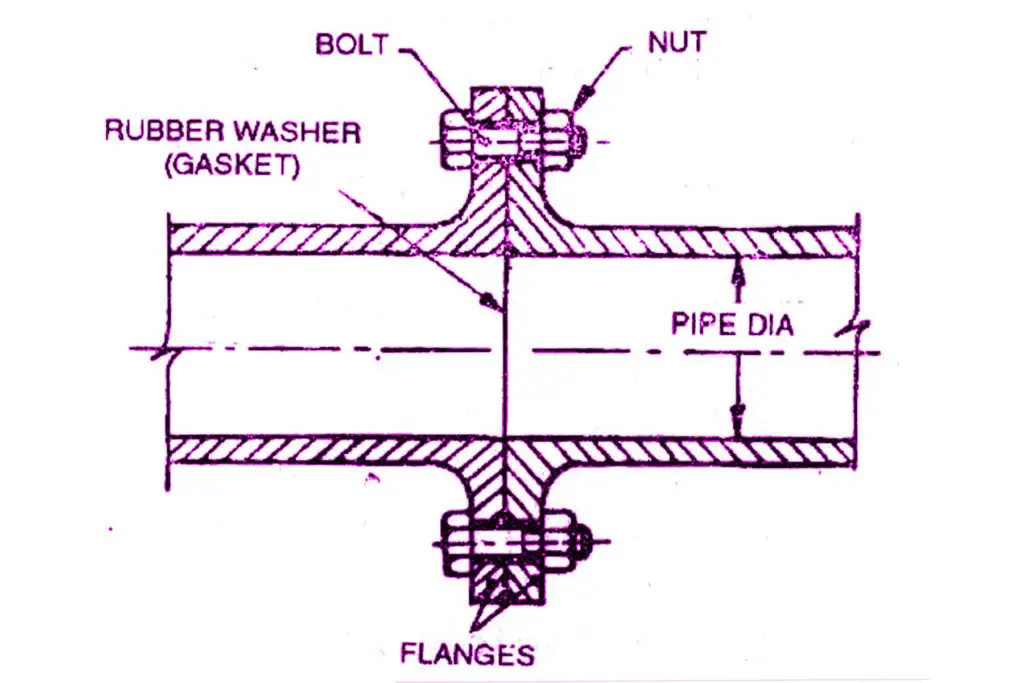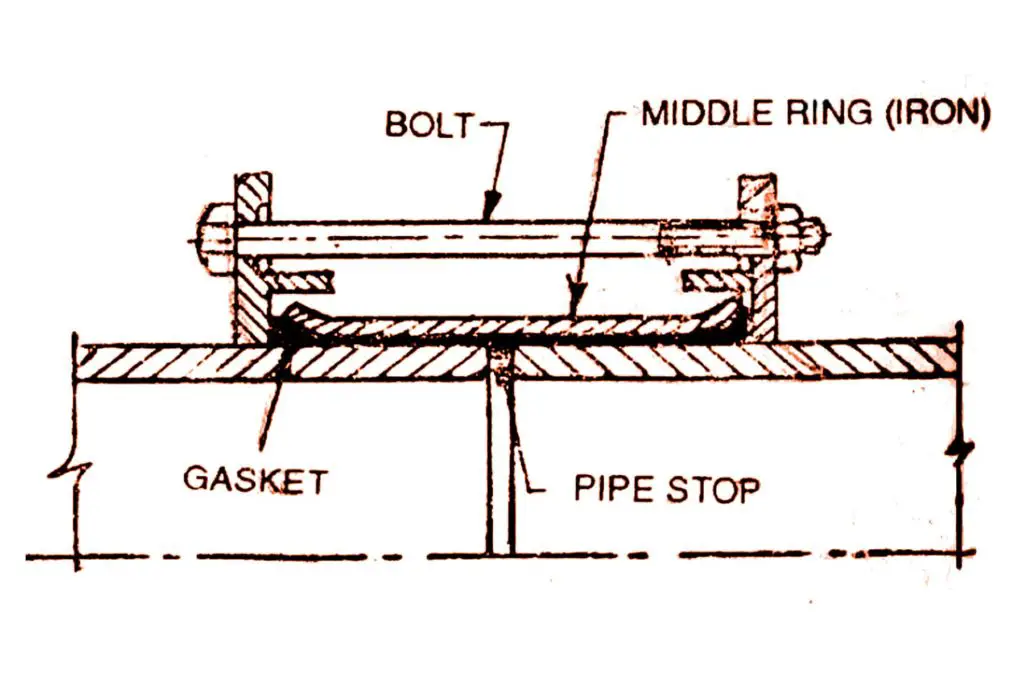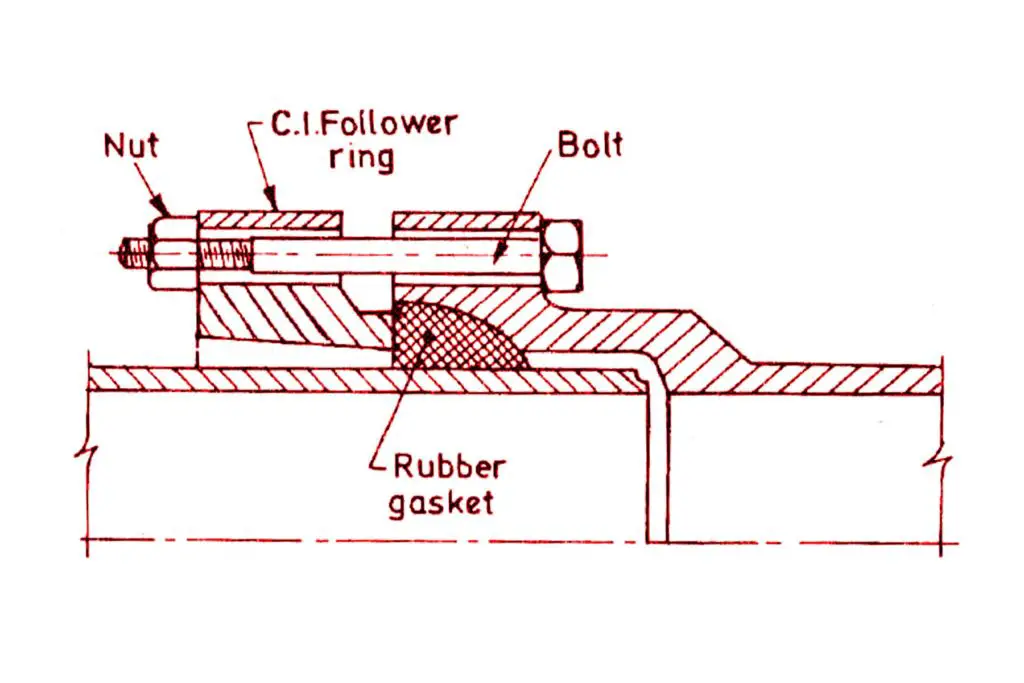When it comes to plumbing systems, one material has stood the test of time: cast iron. Cast iron pipes have been a trusted choice for plumbing applications for over a century, thanks to their exceptional strength, durability, and longevity. C. I. pipes are known for their resistance to corrosion which is one of the key advantages over other alternatives. In this article, we will explore the features, benefits, and everyday applications of cast iron pipes, highlighting why they remain a reliable option in the modern plumbing industry.
A Brief History:
C.I. pipes have a rich history that dates back to ancient civilizations. The Romans, known for their advanced engineering techniques, utilized cast iron for various applications, including water supply systems. The durability and reliability of these early cast iron pipes set the foundation for their continued use over the centuries.
Cast iron pipes are widely used for plumbing and sanitation system including water supply. They are sufficiently resistant to corrosion and may last as long as 100 years or so (Garg. p310). That is why cast iron pipes are a trusted choice for water supply in cities ever since the 17th century. The pipe was initially used without any coating and lining which later was introduced to reduce corrosion and improve hydraulics.
Manufacturing of Cast Iron Pipe
They are generally manufactured in a length of 3.5 meters. However, on special request, it is also manufactured up to the 6-meter length. The manufacturing of C.I. pipe is usually done in two methods, namely the Ordinary sand moulding process and the centrifugal process.
In Ordinary sand moulding, molten metal is poured into sand-lined moulds that are set in either a vertical or horizontal position. Horizontally cast pipes are known as McWane pipes and those cast vertically are referred to as pit Cast. McMane pipes are 100 per cent stronger in tension and 50 per cent stronger in rupture than vertically cast iron pipes or pit-cast pipes.
Centrifugally cast iron pipes are made either in sand mould or water-cooled metallic moulds. The pipes cast in the sand mould are known as Sand Spun pipes and pipes cast in the metallic mould are called Delavaud pipes. The spun iron pipes are fine-grained and denser with uniform thickness, hence these pipes are denser and lighter (Punmia. p.403). Centrifugally cast iron pipes are generally available in three types(Class LA, Class B and Class C) in India as per the provision of IS 1536-1976. However, vertically cast iron pipes are generally available in two types (Class A and Class B) as per the provisions of IS1537-1967.
Features and Strengths:

- Exceptional Durability: Cast iron pipes are renowned for their remarkable durability. They can withstand heavy loads, resist external pressure, and endure harsh environmental conditions. This durability translates into a long lifespan, making cast iron pipes a cost-effective plumbing solution.
- Corrosion Resistance: One of the significant advantages of cast iron pipes is their natural resistance to corrosion. The iron material forms a protective layer, preventing the pipe from rusting or deteriorating over time. The resistance to internal corrosion is achieved by introducing the lining of cement mortar primarily of type I and type II cement as per the standard published by the American Standard Association. This resistance to corrosion makes cast iron pipes ideal for both underground and above-ground applications.
- Acoustic Performance: Cast iron pipes have excellent acoustic properties, effectively dampening sound and reducing the transmission of noise within plumbing systems. This feature is particularly beneficial in residential and commercial buildings, where occupant comfort and noise control are essential.
Cast Iron Pipe Joints
The following joints are provided in Cast Iron pipes:
1. Spigot and Socket joint: The enlarged end of the pipe is known as the socket or bell joint. The socket accommodates the normal or the spigot end. The cast iron pipes which are to be joined by the socket and spigot joint are made in such a way that one of the ends is enlarged, whereas the other end is kept normal. The enlarged end is called a socket or bell while the normal end is called a spigot. The spigot is fitted into the socket.
A few strands of jute are wrapped around the spigot before inserting it in the socket and then, more jute is packed into the joint. The remaining space between the socket and the spigot is finally filled with molten Lead (Pb) heated to 400°C or 752°F, which gets solidified and tightly caulked by a series of chiselling into the joint after cooling and thus making a water-tight joint. The quantity of Lead required per joint varies from 3.5 to 4 kg for 15cm diameter pipe to 45 to 50 kg for 120cm diameter pipe. The joint is also known as the run-lead joint (Punmia. p.404).
Such a type of joint is somewhat flexible and allows the pipes to be laid on flat curves without the use of specials. However, skilled labour is required for this type of joint. For economy, sometimes certain patented compounds of Sulphur (S) and other materials and neat cement mortar are also used in place of Lead. Though these materials are cheaper than Lead, do not provide as much flexible joints as provided by Lead.

2. Flanged joint: This particular joint configuration is employed in flanged cast iron (C.I.) pipes. Prior to assembly, these pipes are meticulously aligned, ensuring proper positioning before inserting bolts and bringing the flanges together. Within this joint, a rubber ring with a diameter slightly smaller than the bolt-circle diameter is inserted between the flanges, as depicted in the accompanying figure. It is crucial to ensure direct contact between the clean, dry metal flanges and the clean, dry rubber material, with no introduction of oil or grease.
Flanged joints find application in pumping stations, filter plants, and other areas where there might be a need for periodic disconnection of the pipe.

3. Couple Joints or Mechanical Joints: A mechanical joint is a type of connection that utilizes mechanical components to join two sections of pipe together. It is a widely used method for creating secure and reliable connections in various pipe systems, including cast iron pipes. Two types of coupling joints are used namely Viking Johnson coupling (Dressing coupling) and Civtaulic coupling. In both these, the pipes do not have sockets for spigots. Such joints are highly flexible.
To establish a mechanical joint namely a Viking Johnson coupling or Dressing coupling, the end of one pipe is brought close to the other end of the other pipe. The joint is then secured using mechanical components such as gland bolts, follower gaskets, and gland rings. Gland bolts are tightened to compress the gasket and create a watertight seal between the joints.
In the case of the Victaulic coupling joint, two ends of the pipes are joined using coupling housing which is placed around the grooved pipe ends, aligning the grooves with the housing’s internal teeth or ridges. The gasket is positioned inside the coupling housing. Bolts and nuts are used to secure and tighten the coupling housing onto the pipe ends. This compresses the gasket, creating a reliable and leak-free seal.
Mechanical joints are commonly used in various pipe applications, including water distribution, wastewater systems, and industrial pipelines. They are particularly favoured in cast iron pipe installations due to the material’s strength and durability.

4. Expansion joints: Expansion joints are incorporated into cast iron (C.I.) pipes to facilitate unimpeded expansion or contraction in response to temperature fluctuations. These joints are strategically placed at appropriate intervals along the pipeline to counterbalance the thermal stresses caused by varying temperatures.
To create expansion joints in cast iron pipes, a flanged socket end is cast, while the spigot end remains plain. The socket end is firmly connected to an annular ring that can freely slide over the spigot end. During the joint assembly, a small gap is intentionally maintained between the face of the spigot and the inner face of the socket. This space is crucial to accommodate the expansion and contraction movements of the pipe.
To secure the joint, a rubber gasket is inserted to fill the void around the spigot end. This rubber gasket acts as a sealing material, ensuring a watertight connection. Once the gasket is in place, the flanges are tightened using nuts and bolts. The tightening of the flanges ensures a secure and stable connection that can withstand the internal pressure and thermal stresses exerted on the pipe.
The figure below illustrates the configuration of the joint, depicting the flanged socket end, the plain spigot end, the annular ring, the rubber gasket, and the fastening mechanism with nuts and bolts. This arrangement allows for both axial movement and angular rotation of the pipe, accommodating expansion and contraction without compromising the overall integrity of the system.
By incorporating expansion joints into cast iron pipe installations, the potential negative effects of temperature variations, such as pipe distortion or failure, can be effectively mitigated. These expansion joints enable the pipe to expand and contract freely, reducing the risk of structural damage and ensuring the longevity and functionality of the entire pipeline system.

Applications:
Cast iron pipes find applications in various plumbing systems, including:
- Sewer Systems: The strength and durability of cast iron make it an ideal choice for sewer systems, efficiently handling wastewater transportation.
- Drainage Systems: Cast iron pipes are widely used in drainage systems due to their ability to withstand high volumes of water flow and resist the effects of sedimentation.
- Rainwater Harvesting: Cast iron pipes are also utilized in rainwater harvesting systems, efficiently collecting and directing rainwater for reuse.
- Ventilation Systems: The acoustic properties of cast iron pipes make them suitable for ventilation systems, reducing noise transmission and ensuring efficient airflow.
Advantages of C.I. pipes
- C.I. pipes are neither expensive nor cheap. Thus they are moderately cost compared to other alternatives.
- Their joining is easily established.
- Cast iron pipes possess inherent resistance to corrosion, which is one of the key advantages of the pipes.
- They have a long life of up to 100 years or more due to their strength and durability.
- Making service connections in cast iron pipes can be accomplished with relative ease using various techniques and fittings designed specifically for this purpose without compromising its overall integrity.
Disadvantages of C.I. pipes
- Their carrying capacity can be reduced by up to 70% in specific waters due to tuberculation affecting them.
- When their diameter exceeds 120cm, they become heavier and therefore economically impractical.
- They are not suitable for pressures exceeding 7kg/cm2 or 700kN/m2.
- Cast iron pipes possess a characteristic fragility that renders them susceptible to damage and breakage under certain conditions, especially during transportation and making joints.
Installation of Cast Iron Pipe:
Installation of C.I. pipes depends upon the intended use and flow requirements. Installation of C.I. pipe by experienced plumbers is essential to ensure proper joint connections and alignment, ensuring leak-free performance for the intended application.
Maintenance of Cast Iron Pipe:
Proper maintenance is crucial to maximizing the lifespan of cast iron pipes. Regular inspections, removal of debris or scale buildup, and application of protective coatings can help extend their longevity.
FAQs:
Q: Are cast iron pipes prone to corrosion?
Ans: Cast iron pipes can be susceptible to corrosion over time, especially in aggressive soil conditions or when exposed to certain chemicals in wastewater. However, internal corrosion can be reduced by applying protective linings or coatings to the pipe’s interior surface.
Q: What are the advantages of cast iron pipes?
Ans: Cast iron pipes offer several advantages, including their exceptional strength and durability. They have a long lifespan and can withstand high levels of pressure, making them suitable for carrying wastewater and sewage. Cast iron pipes also have excellent sound insulation properties, reducing noise from flowing water.
Q: Can cast iron pipes be used for drinking water supply?
Ans: While cast iron pipes have been used for water distribution in the past, their use for drinking water supply has decreased in recent years due to concerns about water quality. Other materials, such as PVC or copper, are now more commonly used for potable water systems.
Q: Can cast iron pipes be recycled?
Ans: Yes, cast iron pipes are highly recyclable. When they reach the end of their useful life, the pipes can be salvaged and recycled as scrap metal. Recycling cast iron pipes helps conserve natural resources and reduce waste sent to landfills.
Q: Are there any health concerns associated with cast iron pipes?
Ans: Cast iron pipes are generally considered safe for use in plumbing systems. However, older cast iron pipes may have internal scaling or rust that could affect water quality. If you have concerns about the water quality from cast iron pipes, it is advisable to have the water tested for contaminants.
Q: Can cast iron pipes be used in areas with high soil acidity?
Ans: Cast iron pipes may not be the best choice for areas with highly acidic soil conditions. Acidic soils can accelerate the corrosion of cast iron, potentially leading to reduced pipe lifespan and structural integrity. In such cases, alternative materials that are more resistant to corrosion, such as PVC or HDPE, may be preferred.
References:
- Punmia, B.C. (2005). Environmental Engineering (vol.-1). Water Supply Engineering. Laxmi Publications (P) Ltd. 22 Golden House, Daryaganj New Delhi-110002
- Garg, S. K. (September 2, 2007). Environmental Engineering (vol.-1) Water Supply Engineering. Khanna Publishers. 2-B, Nath Market, Nai Sarak, New Delhi-110006
- Stewart, M. (2016). Piping system components. Surface Production Operations, 193-300. https://doi.org/10.1016/B978-1-85617-808-2.00004-3
- Stewart, M. (2016). Material requirements: Piping materials. Surface Production Operations, 159-192. https://doi.org/10.1016/B978-1-85617-808-2.00003-1
- Cast iron pipe. (2023, February 26). In Wikipedia. https://en.wikipedia.org/wiki/Cast_iron_pipe
Also, read:
- Concrete Pipes: Advantages and Disadvantages of Concrete Pipe
- Joints for Concrete Pipes [pdf]
- Types of Traps: Functions And Used In Plumbing
![]()







